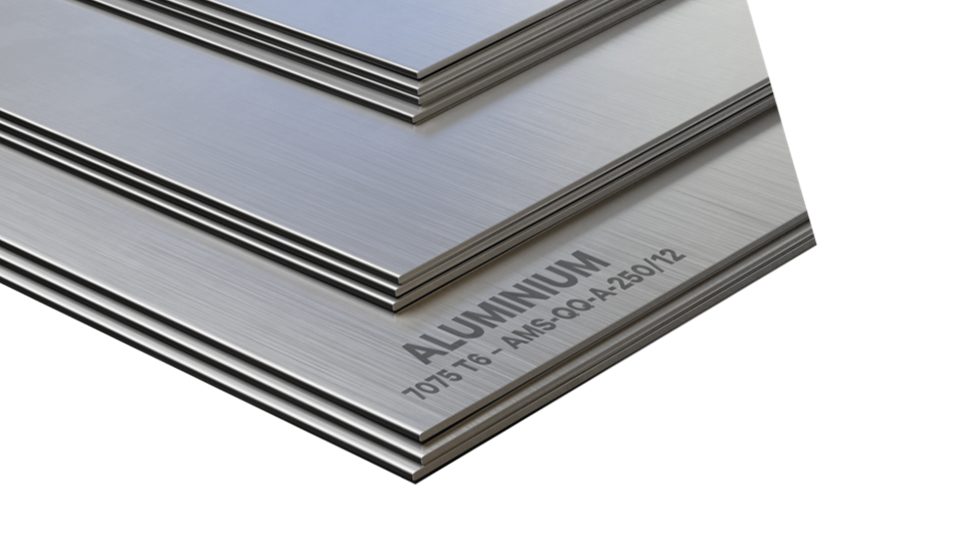Weigh it up!
Calculate the weight of your alloy in any format; Aluminium, Copper, Titanium, Carbon Steel, Low Alloy Steel, Heat Resistant Steel.
Metal weight calculatorLeading distributor of aerospace and OEM standard raw materials - AOG & MRO sheet specialists - AMS QQA & BS L standards in stock
+44 (0) 2476 645 551
[email protected]

7075 – ASTM B209 | AMS-QQ-A-250/12 | AMS-QQ-A-250/13 | AMS-QQ-A-225/9 | AMS-QQ-A-200/11 | AMS-QQ-A-200/15 | AMS-WWT-700/7 | AMS4045 | AMS4048 | AMS4049 | AMS4078 | AMS4123 | AMS4124 | AMS4154 | AMS4169
As an alloy that offers a superior strength-to-weight ratio than that of steel, 7075 is an aluminium alloy that contains zinc as the primary alloying element. Although it can be purchased in a number of different tempers, including 7075-T651 aluminium, 7075-T7351 aluminium, and 7075-0, each temper displays a unique set of properties.
Grade 7075 is easy to work with and machinable. General welding is not recommended with 7075 aluminium alloy. However, you may achieve desirable results when applying resistance welding to the alloy. The application of arc or gas welding may lower the alloy’s natural anti-corrosion properties.
The first 7075 was developed by Japanese company Sumitomo Metal in 1936. 7075 was used for the Zero fighter’s air frame of the Imperial Japanese Navy in pre-war times.
7075 is widely used for construction of aircraft structures, such as wings and fuselages. Its strength and light weight are also desirable in other fields. Rock climbing equipment and bicycle components are commonly made from 7075 aluminium alloy. The bicycle industry is also using 7005 and 6061 aluminium alloys. Hobby grade R/C’s commonly use 7075-T6 and 6061 for chassis plates. One interesting use for 7075 is in the manufacture of M16 rifles for the American military.
| Specification | Material | Publication Date |
|---|---|---|
| AMS-QQ-A-250/12 | Aluminum Alloy 7075, Plate and Sheet | 24/04/2007 |
| AMS-QQ-A-250/13 | Aluminum Alloy Alclad 7075, Plate and Sheet | 24/04/2007 |
| AMS-QQ-A-225/9 | Aluminum Alloy 7075, Bar, Rod, Wire, and Special Shapes; Rolled, Drawn, or Cold Finished | 19/05/2010 |
| AMS-QQ-A-200/11 | Aluminum Alloy 7075, Bar, Rod, Shapes, Tube, and Wire, Extruded | 24/04/2007 |
| AMS-QQ-A-200/15 | Aluminum Alloy Bar, Rod, and Shapes, Extruded, 7075-T76 Improved Exfoliation Resistance | 01/07/1997 |
| AMS-WWT-700/7 | Tube, Aluminum Alloy, Drawn, Seamless, 7075 | 01/07/2001 |
| AMS4045 | Aluminum Alloy Sheet and Plate 5.6Zn - 2.5Mg - 1.6Cu - 0.23Cr 7075: (-T6 Sheet, -T651 Plate) Solution and Precipitation Heat Treated | 01/11/1968 |
| AMS4048 | Aluminum Alloy Sheet and Plate, Alclad 5.6Zn - 2.5Mg - 1.6Cu - 0.23Cr (Alclad 7075-O) Annealed or when specified, “As Fabricated” (Alclad 7075-F) | 01/10/1951 |
| AMS4049 | Aluminum Alloy, Sheet and Plate, Alclad 5.6Zn - 2.5Mg - 1.6Cu - 0.23Cr (Alclad 7075; -T6 Sheet - T651 Plate) Solution and Precipitation Heat Treated | 01/11/1968 |
| AMS4078 | Aluminum Alloy Sheet and Plate 5.6Zn - 2.5Mg - 1.6Cu - 0.23Cr 7075: (-T73 Sheet, -T7351 Plate) Solution Heat Treated and Overaged | 01/07/1992 |
| AMS4123 | Aluminum Alloy, Rolled or Cold Finished Bars and Rods (7075-T651) Solution and Precipitation Heat Treated | 01/05/1968 |
| AMS4124 | Aluminum Alloy, Rolled or Cold Finished Bars, Rods, and Wire 5.6Zn - 2.5Mg - 1.6Cu - 0.23Cr (7075-T73, T7351) Solution Heat Treated, Stress Relieved by Stretching, and Overaged | 01/04/1967 |
| AMS4154 | Aluminum Alloy, Extrusions 5.6Zn - 2.5Mg - 1.6Cu - 0.23Cr (7075-T6, 7075-T6510, 7075-T6511) Solution Heat Treated, Stress Relieved by Stretching when Required and Precipitation Heat Treated | 01/10/1945 |
| AMS4169 | Aluminum Alloy, Extrusions 5.6Zn - 2.5Mg - 1.6Cu - 0.23Cr (7075-T6511) Solution Heat Treated, Stress Relieved by Stretching, Straightened and Precipitation Heat Treated | 01/06/1960 |
A four-digit numerical designation system, developed by the Aluminium Association, is used to designate wrought aluminium and aluminium alloys. The first digit defines the major alloying element in the 2xxx through 8xxx alloy series, the second digit in the designation indicates the alloy modification. When the second digit is zero, it indicates the original alloy. The numbers 1 through 9, assigned consecutively, indicate modifications of the original alloy. Explicit rules have been established for determining whether a proposed composition is merely a modification of a previously registered alloy or if it is an entirely new alloy. The last two of the four digits in the 2xxx through 8xxx series have no special significance but serve only to identify the different alloys in the series.
| Specification | Tensile Strength | Yield Strength | Elongation |
|---|---|---|---|
| O Temper | 40 KSI Minimum | 21 KSI Minimum | 10% |
| T651 | 76 KSI Minimum | 64 KSI Minimum | 5% |
| T7351 | 66 KSI Minimum | 52 KSI Minimum | 6% |
| Element | Lower % | Upper % |
|---|---|---|
| Zinc | 5.100 | 6.100 |
| Manganese | - | 0.300 |
| Silicon | - | 0.400 |
| Copper | 1.200 | 2.000 |
| Magnesium | 2.100 | 2.900 |
| Chromium | 0.180 | 0.280 |
| Molybdenum | - | - |
| Columbium (Niobium) | - | - |
| Titanium | - | 0.200 |
| Aluminium | Remainder | Remainder |
| Cobalt | - | - |
| Iron | - | 0.500 |
| Nickel | - | - |
| Thickness (Inches) | AMS QQA250/13 |
|---|---|
| 0.025 | X |
| 0.032 | X |
| 0.040 | X |
| 0.050 | X |
| 0.063 | X |
| Diameter (Inches) | T7351 | T6511 |
|---|---|---|
| 0.500 | X | |
| 0.750 | X | X |
| 1.000 | X | X |
| 1.250 | X | X |
| 1.500 | X | X |
| 1.750 | X | |
| 2.000 | X | |
| 2.500 | X | |
| 3.000 | X |